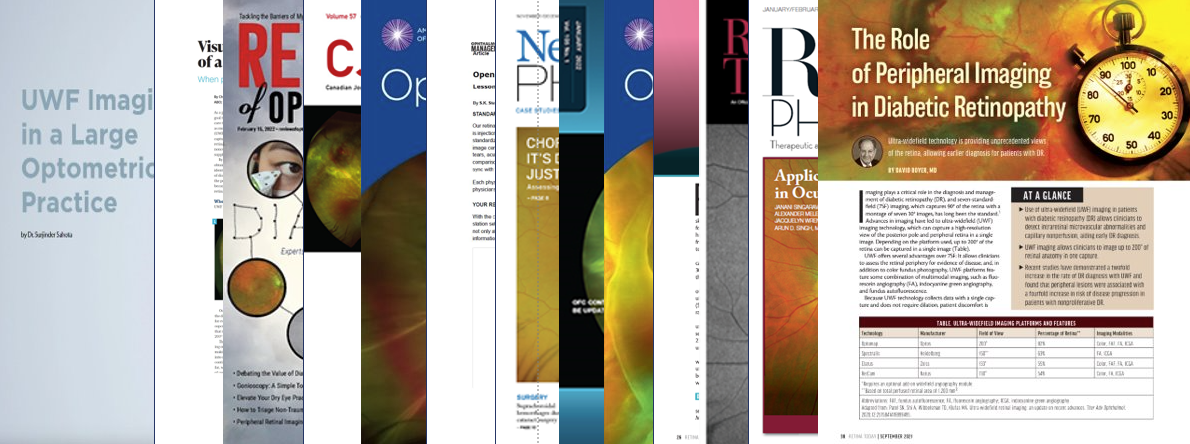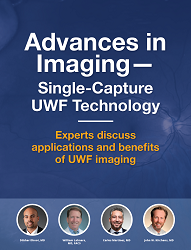Optos UWF imaging helps doctors find more pathology offering the ONLY single-capture ultra-widefield (UWF™) non-mydriatic images. 97% of doctors using optomap report finding unexpected pathology in the eyes of patients with no visual complaints. An increasing number of doctors have moved to UWF imaging because the field of view allows them to assess virtually the “whole eye”, rather than just the macula, or posterior pole. With optomap, practitioners can quickly and easily acquire a 200-degree FOV of the retina, aiding to protect vision, a pillar of Optos technology.
With over 2,000 peer-reviewed publications documenting the impact of Optos UWF technology when diagnosing a variety of conditions, the move to UWF is well supported by the data. Historically, the management of diabetic retinopathy and macular degeneration has been focused on the central retina. With the routine use of UWF imaging, this perspective has changed, and doctors understand how important it is to assess the whole retina.
optomap Imaging in Whole Eye Assessment
- High-risk proliferative diabetic retinopathy often presents with lesions that form across the retina, some into the far periphery. With optomap UWF imaging, significantly more lesions can be seen across the periphery than with ETDRS montage imaging. These lesions, which could have otherwise gone undetected, are now recognized as increasing the risk of progression of these diseases. With UWF imaging, eye care providers can protect vision and prevent the progression of diseases such as diabetic retinopathy.
- UWF imaging is equally important in macular degeneration. While having always been considered a central retinal disease, studies with UWF imaging show that up to 97% of AMD patients have pathology presenting in the periphery.
- When managing uveitis, UWF data, found in the periphery, on vascular leakage or ischemia often changes treatment decisions.
- Additionally in sickle cell disease, UWF imaging was found to detect microvascular abnormalities in the periphery that were otherwise undetected with other examinations.
With the ability to capture 200 degrees of the retina, in a single capture, optomap allows practitioners to detect, diagnose, and treat pathology in the periphery, often before visual complaints or other symptoms present themselves, protecting vision, and in some cases, saving sight.
Protect your patients’ vision, put the power of optomap in your practice, today. Sign up to receive email notifications for our next pillar of optomap – Image Safety, and our future blog posts.

